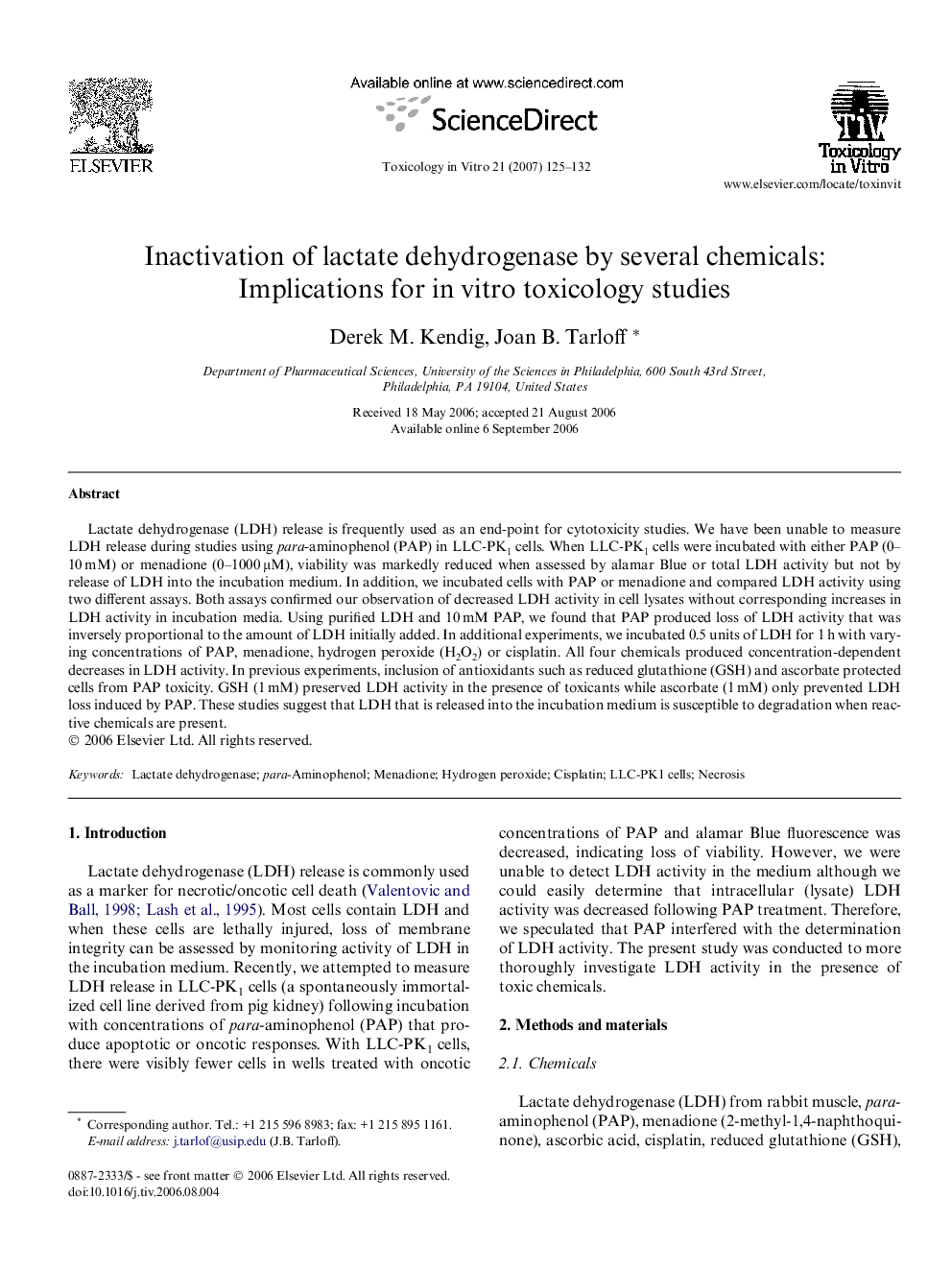| Article ID | Journal | Published Year | Pages | File Type |
|---|---|---|---|---|
| 2603935 | Toxicology in Vitro | 2007 | 8 Pages |
Lactate dehydrogenase (LDH) release is frequently used as an end-point for cytotoxicity studies. We have been unable to measure LDH release during studies using para-aminophenol (PAP) in LLC-PK1 cells. When LLC-PK1 cells were incubated with either PAP (0–10 mM) or menadione (0–1000 μM), viability was markedly reduced when assessed by alamar Blue or total LDH activity but not by release of LDH into the incubation medium. In addition, we incubated cells with PAP or menadione and compared LDH activity using two different assays. Both assays confirmed our observation of decreased LDH activity in cell lysates without corresponding increases in LDH activity in incubation media. Using purified LDH and 10 mM PAP, we found that PAP produced loss of LDH activity that was inversely proportional to the amount of LDH initially added. In additional experiments, we incubated 0.5 units of LDH for 1 h with varying concentrations of PAP, menadione, hydrogen peroxide (H2O2) or cisplatin. All four chemicals produced concentration-dependent decreases in LDH activity. In previous experiments, inclusion of antioxidants such as reduced glutathione (GSH) and ascorbate protected cells from PAP toxicity. GSH (1 mM) preserved LDH activity in the presence of toxicants while ascorbate (1 mM) only prevented LDH loss induced by PAP. These studies suggest that LDH that is released into the incubation medium is susceptible to degradation when reactive chemicals are present.
